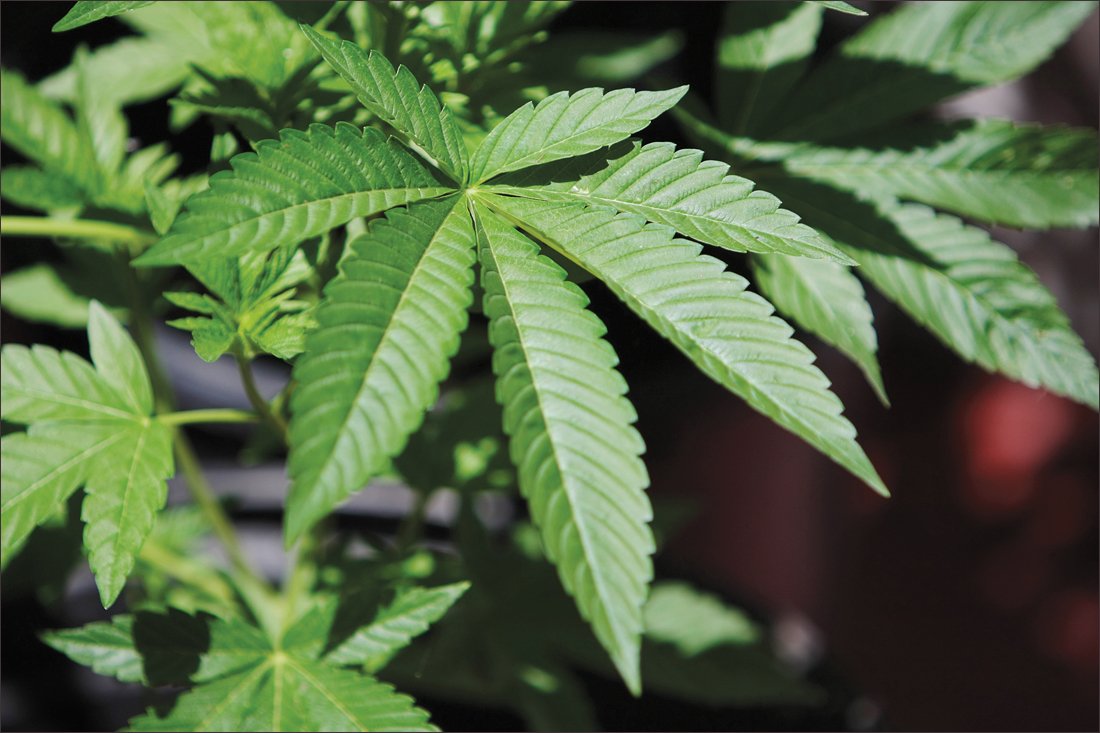
MAIN LIBRARY — As Los Angeles struggles to decide what to do with its medical marijuana dispensaries, Santa Monica city officials embarked Thursday on the complex process of deciding whether or not to allow them at all, and if so how to regulate them.
Unfortunately, very few people bothered to attend the first public meeting of its kind.
About a dozen people, many of whom owned dispensaries in Los Angeles and West Hollywood, showed up at the Main Library to express their opinions. And while the ideas varied when it came to regulating them, one thing was clear: The majority favored allowing dispensaries to set up shop in Santa Monica.
Filmmaker Len Richmond, who produced the documentary "What if Cannabis Cured Cancer?" was one of them. The Santa Monica resident said he is disabled and can't drive to other areas where dispensaries are already in operation. He needs to get his medical marijuana closer to home to provide relief for the pain he suffers because of kidney stones and shingles.
He also said that only a certain strain of marijuana works and without a professional to help guide him, he would have to hit the streets and take his chances.
"Without dispensaries in Santa Monica, you are making it very prohibitive for me," he said.
City officials presented a list of policy-oriented questions to guide the night, beginning with the most critical: Is there a need for medical marijuana in Santa Monica?
If the answer to that is "yes," City Hall needs to lay down other guidelines, including how many facilities should be allowed; the placement of those in relation to schools, playgrounds and other community sites; and whether or not proprietors should be allowed to grow or process marijuana on site.
Hours of operation, security and even limits on how much medicine can be sold at individual sites are also topics to be addressed.
Several in attendance seemed to agree that restrictions on where the shops could operate are needed. One man suggested creating a buffer around schools and places of worship. When the idea of 24-hour security was floated, most were opposed, saying security was only needed during operating hours.
Jon Mann, a perennial City Council candidate, lobbied hard for City Hall to take sole control over dispensaries by setting up a cultivation operation at the Santa Monica Airport and one dispensary to be run by city employees. That way Santa Monica taxpayers could receive all the profits and city officials could ensure that the dispensary is run properly.
That idea fell mostly flat. Some raised concerns that since marijuana is still considered an illegal drug by the federal government, if City Hall were to sell it, city-owned property like the airport could be confiscated.
Others in the group supported a free-market solution in which dispensaries would be able to operate under specific rules dictating hours of operation, security, signage and other factors.
Many pointed to West Hollywood, one of the first and most successful cities to adopt medical marijuana regulations. Officials there put strict controls on marijuana dispensaries, allowing only four locations at any given time, and the businesses can only be located along specific transit corridors set away from neighborhoods.
Locations must be at least 1,000 feet away from other dispensaries and 500 feet from parks, schools, churches and similar facilities.
West Hollywood also bars applicants or property owners from opening dispensaries if they had a similar license revoked or denied for good cause within two years of having applied. Applicants also have to pass a background check by the Los Angeles County Sheriff's Department.
Those who attended the Thursday meeting said such restrictions may need to be eased because Santa Monica is more dense than West Hollywood, leaving very few places that would be suitable and not come in conflict.
Santa Monica city planners addressed some of those issues in a 2007 study commissioned by the City Council when the question of medical marijuana dispensaries first arose.
The report came in response to a request to open a dispensary on Main Street. The use was not explicitly prohibited by local rules, but no provisions for dispensaries existed in the zoning code.
Since that time, at least 15 inquiries about medical marijuana dispensaries and one actual business license request have showed up at Santa Monica City Hall.
The intensity of interest in the subject caused city officials to recently bring an emergency 45-day moratorium on dispensaries to the City Council to give planners breathing room to craft a comprehensive policy.
That was later extended by at least 10 months. It is expected to expire in the fall.
Thursday's community meeting was part of the ordinance-drafting process.
City officials have no specific date when they must report back to the City Council. More community meetings and outreach are expected.
Background
Santa Monica residents have been permissive of even the recreational use of marijuana in the past.
Voters made the act of an adult smoking marijuana in the home the lowest possible police priority in 2006. That means police have to respond to complaints about barking dogs before a report of someone lighting up a joint.
At that time the Marijuana Policy Project, which sponsored the measure, polled residents and found that 91 percent favored medical marijuana for those with a valid prescription. Santa Monica voters solidly support much broader marijuana policy reform. Nearly two-thirds voted in favor of Prop. 19 in 2010, which would have made marijuana legal for adults' use and allowed its sales to be regulated by cities, according to an analysis of the election results conducted by the group.
kevinh@www.smdp.com
Daily Press staff writer Ashley Archibald contributed to this report.









